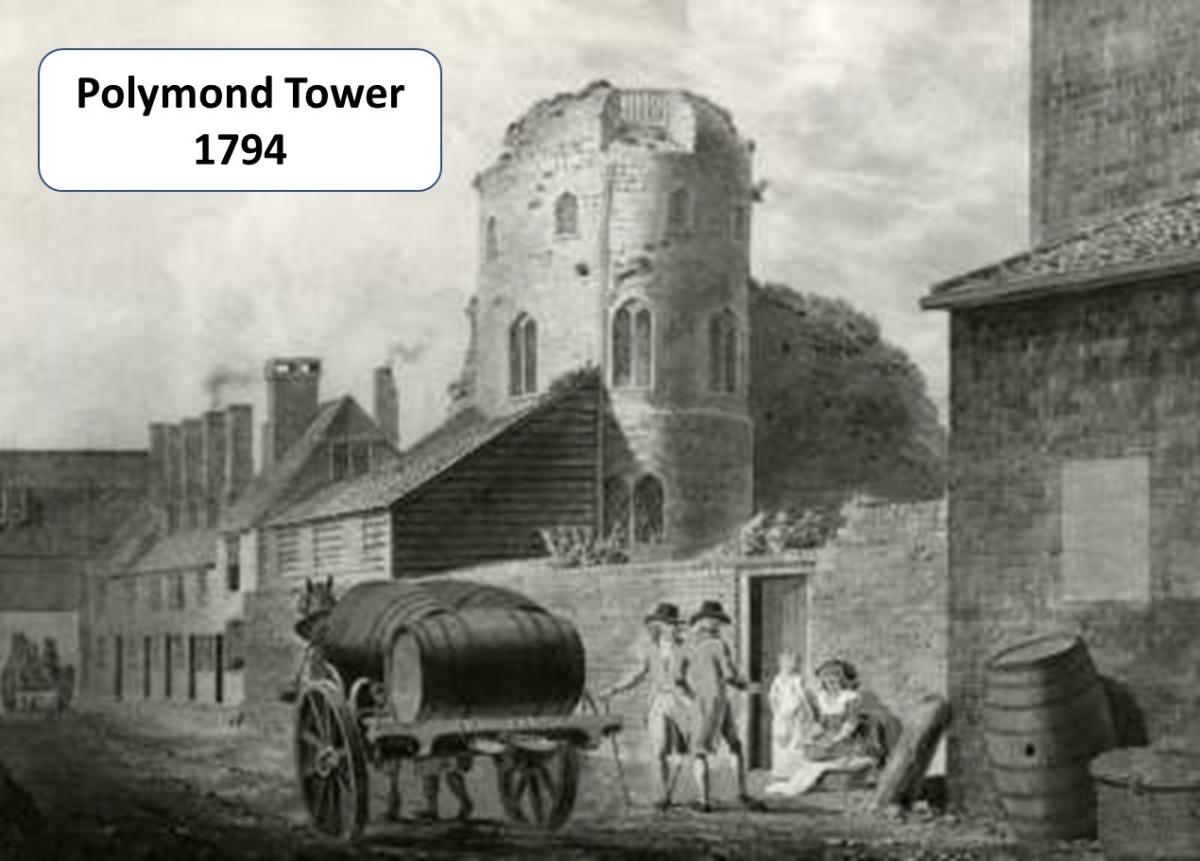Training as a Southampton Green Badge Guide, I was told that medieval Southampton had 29 towers and 8 Gates, and I have repeated that to customers on many occasions since. I recently decided to look further into this claim and look into the 29 towers today.
In 1338, Southampton was raided by French and Italian forces, and the town's defences proved inadequate on the west and south sides.
Over the coming decades, the Town was entirely enclosed by a one-and-a-quarter-mile stone wall.
Read more: Hampshire shops, pubs, banks and more in the 1980s >>>
A document called the 1454 Terrier lists all the properties of value in the town and assigns to their owners the costs of maintaining named sections of the town walls and towers.
Using this information and later maps, we can compile the following list of towers, moving clockwise from the Bargate. This excludes the towers of the main gates as it would take us well over 29.

To the east of the Bargate, we find two unnamed towers, leading to the north-east corner tower known as Polymond Tower, named after John Polymond, a late 14th-century mayor.
All these towers still stand, and will be accessible again from late 2024 when the Bargate Quarter development is complete.

The East Walls and their towers, running south from Polymond Tower, have been demolished, except at the south end.
There was one tower between Polymond Tower and the East Gate which stood across East Street just west of Queensway.

Then south of the East Gate, leading down to Bernard Street, were four lost towers whose positions are marked on Speed’s Map of 1611, and some later maps.
South of Bernard Street, the walls and towers are still standing to some extent - the Friary Reredorter (toilets), the Friars Gate Tower and the Dovecote Tower, before Gods House Gate at the south-east corner of the town.
Don't miss out: Get our weekly heritage and nostalgia newsletter >>>
If you walk through the gate and turn to your right and walk west along Town Quay, you are outside the walls, which have almost vanished, with a few remnants included in the back walls of the buildings such as the Platform.
Just before we meet the High Street, we pass the site of the lighthouse-shaped Canute’s or Notebeeme Tower, marked in the paving and by a plaque.

Then we reach the South- or Water-Gate, where we still have the Western Tower to show us where it crossed the High Street, but that’s not included in the count.
Moving west again along Town Quay, we pass the unmarked sites of two vanished towers - the Tower Next the Long House" and the Wool Bridge Tower and reach surviving remnants of a tower on the west side of the Yacht Club, the Small Corner Tower.
There was one more vanished tower before the Westgate - The Latrine Tower, charmingly named after a nearby public lavatory!

Just North of the West Gate we find William Nycholl’s Tower – he was mayor in the early 15th century. And then we reach the Arcades. There were three towers in these, demolished in the 1700s, but which can still just be traced between the arches.
From Simnel Street, there were two towers in a vanished salient that projected west and then returned northeastwards, and then a Castle Garderobe Tower, the base of which still remains.
Another unnamed tower, and another Reredorter Tower, bring us first to Catchcold Tower, and then Arundel Tower in the northwest corner of the town, named after Sir John Arundel, Governor of Southampton Castle in the late 1300s.

The stretch of north wall back to the Bargate contained one final lost Tower.
Total, 27 Towers. The earliest document that I can find states that “the medieval town had 29 Towers” was the “History of the County of Hampshire”, in 1908. So I’m two short!
Maybe I should include some of those towers in the Gates – but if I count them all, I’ll go well over the 29 figure!

Jack Wilson is a tour guide with SeeSouthampton.co.uk .













Comments: Our rules
We want our comments to be a lively and valuable part of our community - a place where readers can debate and engage with the most important local issues. The ability to comment on our stories is a privilege, not a right, however, and that privilege may be withdrawn if it is abused or misused.
Please report any comments that break our rules.
Read the rules hereLast Updated: 1st January 1970 12:00 am
Report this comment Cancel